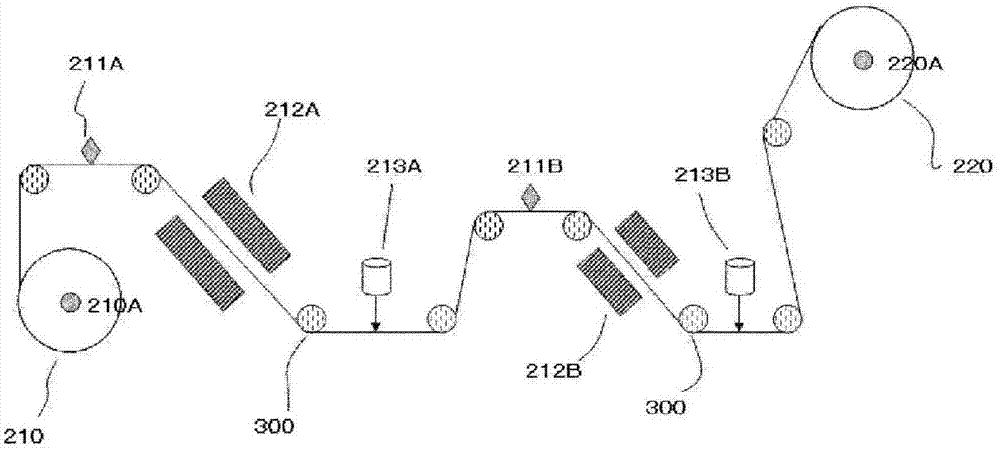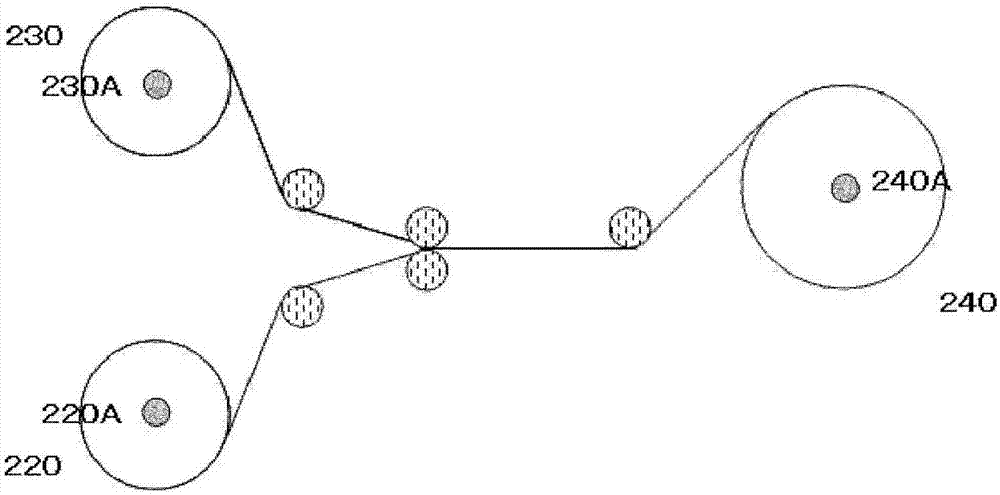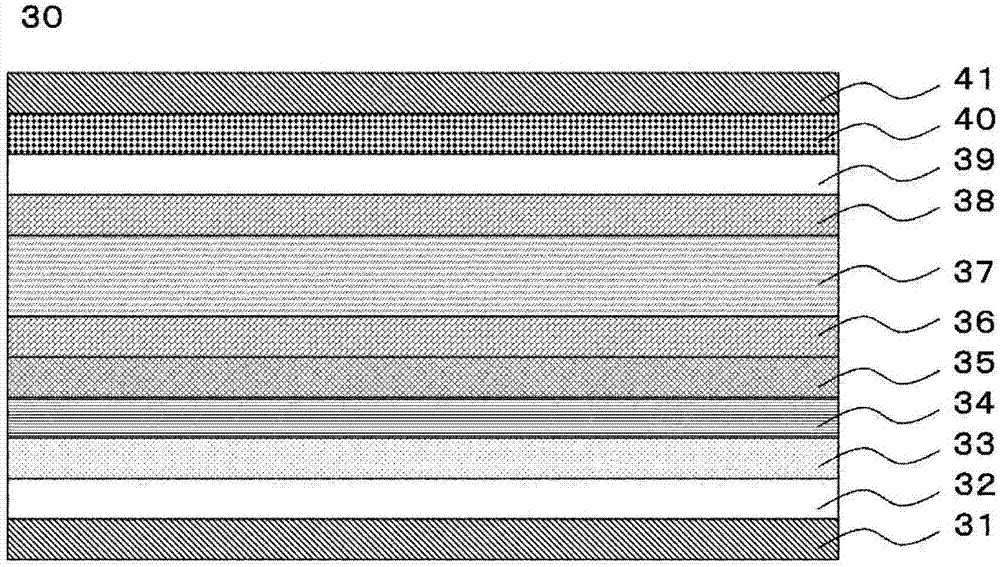Compound and composition
A compound and bonding technology, applied in chemical instruments and methods, organic chemistry, preparation of azo dyes, etc., can solve the problem of low dichroic ratio of polarizing films
- Summary
- Abstract
- Description
- Claims
- Application Information
AI Technical Summary
Problems solved by technology
Method used
Image
Examples
Embodiment 1
[0343]
[0344] 0.15 g of the compound shown in formula (2A), 0.10 g of the compound shown in formula (3A), 0.50 g of potassium phosphate, 0.0087 g of tris(dibenzylideneacetone) dipalladium (0), and 0.0087 g of tri-tert-butylphosphonium 0.011 g of tetrafluoroborate and 3 g of 1,4-dioxane were mixed. The resulting mixture was stirred at 100° C. for 18 hours under nitrogen atmosphere. The obtained reaction mixture was concentrated, and then purified by silica gel column chromatography (eluent: chloroform). The obtained solid was washed with acetonitrile and then dried to obtain 0.03 g of a compound represented by the formula (1A) (hereinafter referred to as compound (1A)) as an orange solid.
[0345] Mw: 371 (GC-MS)
[0346] Maximum Absorption Wavelength (λ max2 )=360nm (chloroform solution)
Embodiment 2
[0348]
[0349] 0.30 g of the compound shown in formula (2B), 0.21 g of the compound shown in formula (3A), 0.38 g of potassium acetate, [1,1'-bis(diphenylphosphino)ferrocene]dichloropalladium(II ) 0.129g and 18.0g of diethylene glycol dimethyl ether were mixed. The resulting mixture was stirred at 140° C. for 3 hours under nitrogen atmosphere. The obtained reaction mixture was concentrated, and then purified by silica gel column chromatography (eluent: chloroform). The obtained solid was washed with acetonitrile and then dried to obtain 0.010 g of a compound represented by formula (1B) (hereinafter referred to as compound (1B)) as an orange solid.
[0350] Mw: 434 (LC-MS)
[0351] Maximum Absorption Wavelength (λ max2 )=437nm (chloroform solution)
Embodiment 3
[0353]
[0354] 0.40 g of the compound shown in formula (2C), 0.25 g of the compound shown in formula (3A), 0.45 g of potassium acetate, [1,1'-bis(diphenylphosphino)ferrocene]dichloropalladium(II ) 0.150 g and 24.0 g of diethylene glycol dimethyl ether were mixed. The resulting mixture was stirred at 140° C. for 3 hours under nitrogen atmosphere. The obtained reaction mixture was concentrated, and then purified by silica gel column chromatography (eluent: chloroform). The obtained solid was washed with acetonitrile and then dried to obtain 0.032 g of a compound represented by formula (1C) (hereinafter referred to as compound (1C)) as an orange solid.
[0355] Mw: 490 (LC-MS)
[0356] Maximum Absorption Wavelength (λ max2 )=438nm (chloroform solution)
[0357] [Polymerizable liquid crystal compound]
[0358] Using the compound represented by the following formula (4-6) [hereinafter referred to as compound (4-6)], the compound represented by the following formula (4-8) [...
PUM
| Property | Measurement | Unit |
|---|---|---|
| wavelength | aaaaa | aaaaa |
| thickness | aaaaa | aaaaa |
| width | aaaaa | aaaaa |
Abstract
Description
Claims
Application Information
 Login to View More
Login to View More - R&D
- Intellectual Property
- Life Sciences
- Materials
- Tech Scout
- Unparalleled Data Quality
- Higher Quality Content
- 60% Fewer Hallucinations
Browse by: Latest US Patents, China's latest patents, Technical Efficacy Thesaurus, Application Domain, Technology Topic, Popular Technical Reports.
© 2025 PatSnap. All rights reserved.Legal|Privacy policy|Modern Slavery Act Transparency Statement|Sitemap|About US| Contact US: help@patsnap.com



